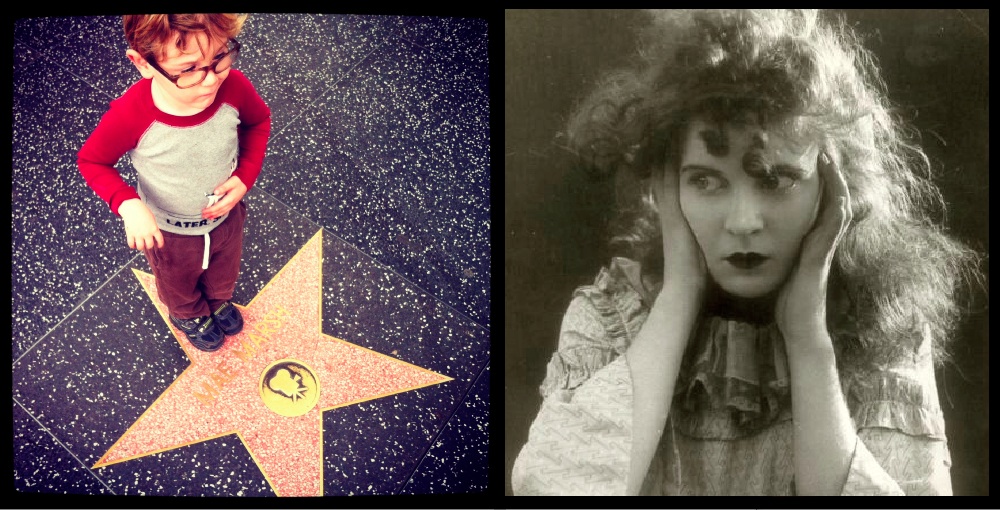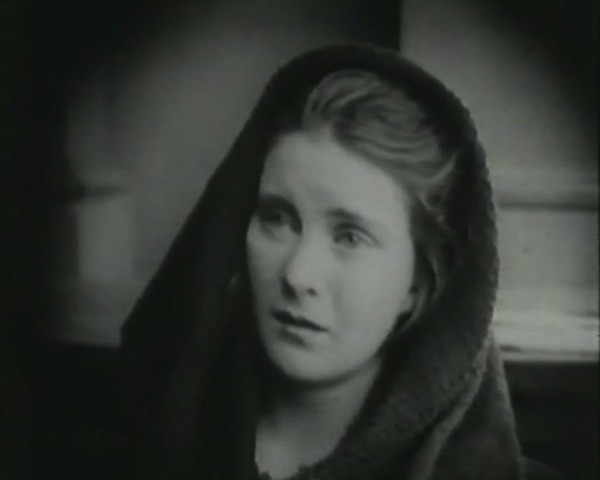 A weekly feature in which my four-year-old son is let loose on the Hollywood Walk of Fame, one of the most popular tourist attractions in Los Angeles, and chooses a star from among the more than 2,500 honorees. His “random” picks sometimes reveal unexplained connections such as the summer day in 2012 when he sat down on the star of actress Celeste Holm and refused to budge. We later learned that the Oscar-winning actress had died only hours earlier.
A weekly feature in which my four-year-old son is let loose on the Hollywood Walk of Fame, one of the most popular tourist attractions in Los Angeles, and chooses a star from among the more than 2,500 honorees. His “random” picks sometimes reveal unexplained connections such as the summer day in 2012 when he sat down on the star of actress Celeste Holm and refused to budge. We later learned that the Oscar-winning actress had died only hours earlier.
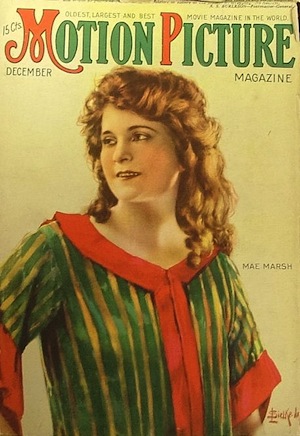 Charlie did not pick Shirley Temple’s star this weekend on the Hollywood Walk of Fame (the former child actress died late last night at the age of 85) but he did pick one of Temple’s co-stars from the 1948 John Ford film Fort Apache: Miss Mae Marsh. That film, in which Shirley played the wonderfully named Philadelphia Thursday, daughter of Henry Fonda’s Lt. Colonel Owen Thursday, featured Henry Ford’s close friend, former silent screen Mae Marsh, in a small role. While a fine film, it hardly registers among the fans of either Temple or Marsh. Continuing his interest in the silent movie queens, Charlie skipped over the more recent stars of the 1930s, 40s and 50s to rest on Mae Marsh’s honorary star near the famous intersection of Hollywood and Vine. Marsh was a contemporary of Charlie’s pick from last week, Mary Pickford, and was actually used by director D.W. Griffith to taunt Pickford when she complained about having to play the kind of little-girl roles that had made her so famous. “Fine,” he said, “if you don’t want those parts, we have someone here who WILL do them!” Early on, Marsh was thrust into roles that had been originally intended for the established star. Pickford didn’t seem to hold it against Marsh — well, not for long, anyway!
Charlie did not pick Shirley Temple’s star this weekend on the Hollywood Walk of Fame (the former child actress died late last night at the age of 85) but he did pick one of Temple’s co-stars from the 1948 John Ford film Fort Apache: Miss Mae Marsh. That film, in which Shirley played the wonderfully named Philadelphia Thursday, daughter of Henry Fonda’s Lt. Colonel Owen Thursday, featured Henry Ford’s close friend, former silent screen Mae Marsh, in a small role. While a fine film, it hardly registers among the fans of either Temple or Marsh. Continuing his interest in the silent movie queens, Charlie skipped over the more recent stars of the 1930s, 40s and 50s to rest on Mae Marsh’s honorary star near the famous intersection of Hollywood and Vine. Marsh was a contemporary of Charlie’s pick from last week, Mary Pickford, and was actually used by director D.W. Griffith to taunt Pickford when she complained about having to play the kind of little-girl roles that had made her so famous. “Fine,” he said, “if you don’t want those parts, we have someone here who WILL do them!” Early on, Marsh was thrust into roles that had been originally intended for the established star. Pickford didn’t seem to hold it against Marsh — well, not for long, anyway!
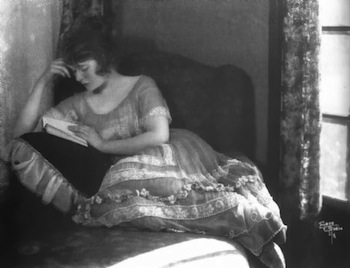 Mae Marsh was born in Madrid, New Mexico, on November 9, 1894. Like many people at the dawn of the movie industry, she became a star almost by accident. “I tagged my way into motion pictures,” she said later. “I used to follow my sister Marguerite to the old Biograph studio and then, one great day, Mr. Griffith noticed me, put me in a picture, and I had my chance!” All three of Mae’s siblings were involved in the movies. Her brother was Oscar-winning cinematographer Oliver T. Marsh (The Great Ziegfeld, The Women, San Francisco), her sister Frances was a film editor (Design for Living, The Merry Widow) and sisters Marguerite and Mildred were fellow actresses. But no one in the family hit it as big as Mae who, by her own admission, was not nearly as glamorous or knock-down gorgeous as many of the stars of the day.
Mae Marsh was born in Madrid, New Mexico, on November 9, 1894. Like many people at the dawn of the movie industry, she became a star almost by accident. “I tagged my way into motion pictures,” she said later. “I used to follow my sister Marguerite to the old Biograph studio and then, one great day, Mr. Griffith noticed me, put me in a picture, and I had my chance!” All three of Mae’s siblings were involved in the movies. Her brother was Oscar-winning cinematographer Oliver T. Marsh (The Great Ziegfeld, The Women, San Francisco), her sister Frances was a film editor (Design for Living, The Merry Widow) and sisters Marguerite and Mildred were fellow actresses. But no one in the family hit it as big as Mae who, by her own admission, was not nearly as glamorous or knock-down gorgeous as many of the stars of the day.
Marsh appeared in dozens of films for both Griffith and Mack Sennett in the early days of the movies. She is probably best known for her role as the innocent sister in Griffith’s controversial 1915 epic, The Birth of a Nation, a brilliantly made film that has the unfortunate distinction of glorifying the rise in the South of the Ku Klux Klan. Marsh’s scene was one of the more explosive moments in the film: her character jumps to her death rather than be sullied by the “renegade” African American character who is later killed by the Klan. Oy. Mae Marsh also appearedin D. W. Griffith’s other masterpiece, Intolerance, a film he made as a kind of apologia for some of the pain that The Birth of a Nation had caused. This three-and-a-half hour epic combined four parallel stories across the ages. In Marsh’s segment, the “Modern” story, she played a mother whose baby was cruelly taken from her after her husband is unjustly convicted of murder.
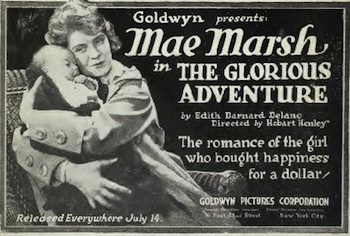 Following the big splash she made in these and other films, Marsh signed a long-term contract with Samuel Goldwyn that earned her a whopping $2,500 a week. However, many people thought at the time that Goldwyn didn’t know how to exploit Marsh’s unique talents as well as Griffith and Sennett had, and, as a result, Marsh’s popularity faltered. In 1918 she married writer and publicity man Louis Lee Arms with whom she stayed married to until her death 50 years later (a Hollywood record?). The couple had three children. Her last big starring role was again for Griffith, playing a flapper in the 1923 film The White Rose. Marsh made a few more films during the waning years of the silent era and all but retired in 1928.
Following the big splash she made in these and other films, Marsh signed a long-term contract with Samuel Goldwyn that earned her a whopping $2,500 a week. However, many people thought at the time that Goldwyn didn’t know how to exploit Marsh’s unique talents as well as Griffith and Sennett had, and, as a result, Marsh’s popularity faltered. In 1918 she married writer and publicity man Louis Lee Arms with whom she stayed married to until her death 50 years later (a Hollywood record?). The couple had three children. Her last big starring role was again for Griffith, playing a flapper in the 1923 film The White Rose. Marsh made a few more films during the waning years of the silent era and all but retired in 1928.
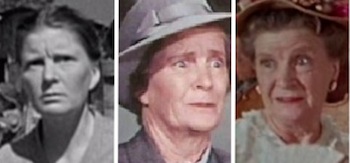 But unlike many former stars who disappeared when talkies took over, Marsh returned to the screen in small cameos starting with a well-received role in Henry King’s Over the Hill in 1931 and continuing for more than 30 years in a variety of films, including, as I mentioned, many directed by her good friend John Ford. In addition to Fort Apache, Marsh appeared in beloved films such as The Grapes of Wrath (1940), How Green Was My Valley (1941), Jane Eyre (1943), Leave Her to Heaven (1945), My Darling Clementine (1946), Miracle on 34th Street (1947), The Snake Pit (1948), The Quiet Man (1952), Titanic (1953), A Star Is Born (1954), The Searchers (1956) and Cheyenne Autum (1964). She even appeared as a guest star on TV shows such as Bonanza and Wagon Train. Marsh died on February 13, 1968 at the age of 73.
But unlike many former stars who disappeared when talkies took over, Marsh returned to the screen in small cameos starting with a well-received role in Henry King’s Over the Hill in 1931 and continuing for more than 30 years in a variety of films, including, as I mentioned, many directed by her good friend John Ford. In addition to Fort Apache, Marsh appeared in beloved films such as The Grapes of Wrath (1940), How Green Was My Valley (1941), Jane Eyre (1943), Leave Her to Heaven (1945), My Darling Clementine (1946), Miracle on 34th Street (1947), The Snake Pit (1948), The Quiet Man (1952), Titanic (1953), A Star Is Born (1954), The Searchers (1956) and Cheyenne Autum (1964). She even appeared as a guest star on TV shows such as Bonanza and Wagon Train. Marsh died on February 13, 1968 at the age of 73.
If Mae Marsh was ever bitter about her transition from movie queen to character actress, she never showed it. Her positive attitude and her ability to have a fulfilling life outside of a movie studio paralleled the rich life of the late Shirley Temple in many ways.

